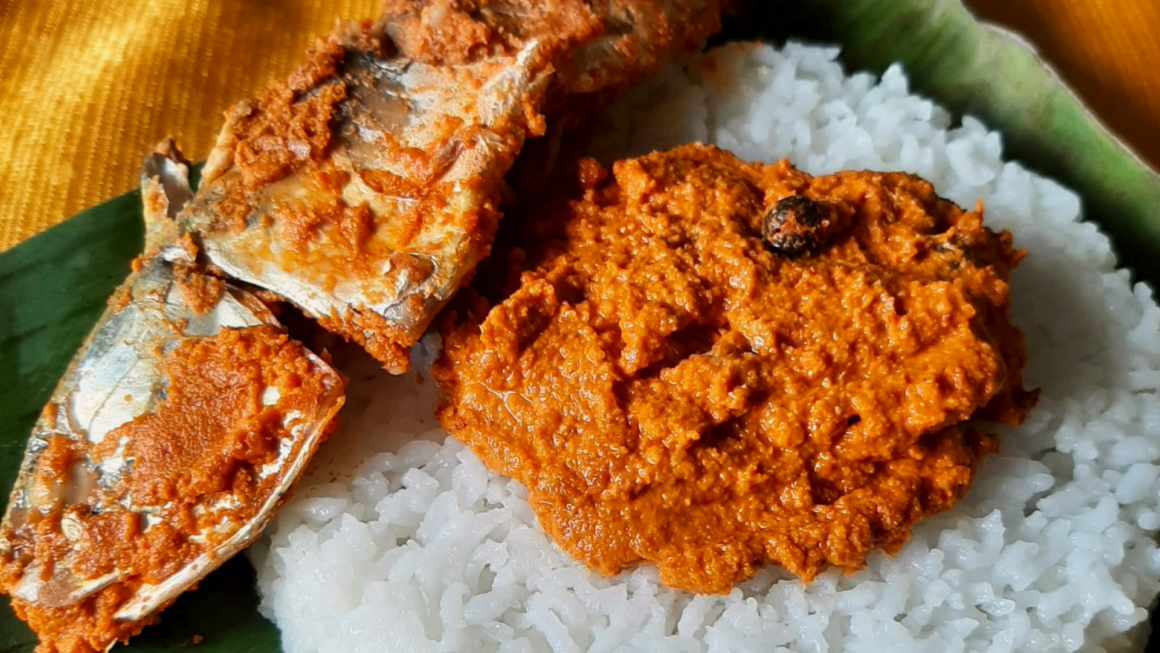If you are in the company of someone who has an affinity towards seafood and notice them deboning a fish without a hitch, no matter how thorny it is; or if you are hosted by someone who pairs a simple vegetarian meal with seafood delicacies that have a potent fresh coconut base, then you’re quite likely in the company of a Goud Saraswat Brahmin! The love of GSB’s (as they are popularly called) for seafood and coconut, is well-known.
I was born and raised in Mumbai to Goud Saraswat Brahmin Parents. Sometime during the 1930s, many GSB families who originally hail from the coastal parts of India like Goa, Karwar and Konkan region in Maharashtra, migrated to Mumbai in search for a source of livelihood.
Mumbai became the last abode for my grandparents too and they lived here for over five decades; but Saraswat food never left our kitchens. Saraswat women like my Grand aunt and my aaji (paternal grandmother) brought with them a treasure trove of Saraswat Dishes.
Consequently, I grew up eating immensely varied and flavourful Karwari Saraswat Dishes and Konkani Saraswat Dishes coming from my Paternal and Maternal side respectively.
In India, we typically don’t start the first meal of the day with a sweet course. Savoury breakfast dishes like idli, dosa, paratha and poha are the preferred morning meals. In Karwari households, however, breakfast begins on a sweet note.
I remember when I was 8 years old, my family and I spent the summer vacation at our native town in Karwar. My aaji, the most energetic and enthusiastic woman I know, was at that time in her early 70’s. Amongst the many exquisite Karwari dishes she fed us, Kalingadaache Goad Pole was always the first dish of the day.
Once we eat the watery red flesh of the watermelon, discarding the white rind and green skin is standard practice. But Karwari Saraswats wisely make use of the rind by making pole from it.
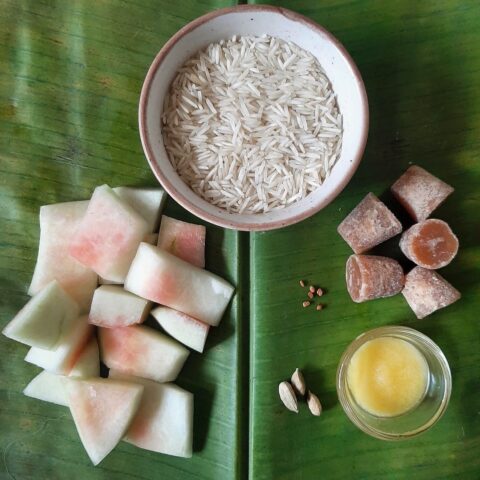
The pole batter made with rice, fenugreek seeds, jaggery and white watermelon rinds is prepared a day before and rested overnight. Next day, a pinch of cardamom powder is added to it. In a heated pan lined with ghee, a ladle full of the batter is poured, spread lightly and cooked until it turns golden brown. Even at 8, standing beside aaji and watching the pole blooming with tiny pores in them was a transfixing sight for me. Golden, fluffy, porous textured sweet pancakes made with watermelon rind – what a clever breakfast dish. That summer, I discovered in me an endless appetite for uninterrupted poles with hot tea.
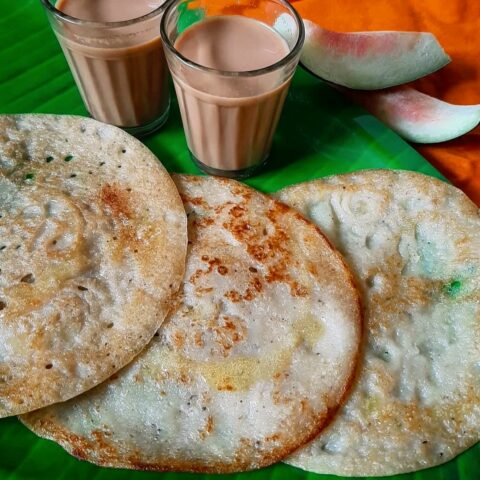
In Karwar, baangda (Mackerel) is abundantly available. Seldom will you find a Karwari Saraswat who has never eaten Baangdyaacha Dhodak.
It is customarily cooked on Shegdi- a clay stove made using wood, coconut husks and charcoal as fuel. The charcoal lends a tenderly smoky flavour and adds a rustic grace to the dish. My father never left a chance to visit the local fish market and bring back fresh baangda for making Baangdyaacha Dhodak. When I first made the dish, I used an electric grinder to prepare the masala. I then recalled how I had seen aaji manually pulverizing fresh coconut and dry red byadgi chillies in a ragda – a heavy mortar and pestle made up of two round grey-black stones, usually granite. Aaji’s hands moved dizzyingly fast, with such ease on the Ragda, that it was a sight I couldn’t really behold! The flavour and texture of the manually ground masala is superlative, compared to what one can achieve with an electric grinder.
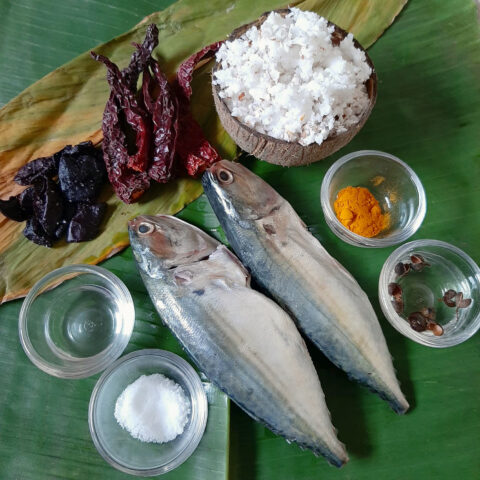
Preparing the Dhodak requires attentive delicacy which carries itself into the experience of eating the dish too.
I carefully coated the fish with a smooth ground masala of fresh coconut and local dry red byadgi chillies which are mildly spicy but render an attractive bright red color. The two main ingredients that elevate the flavour of this dish are Tirphal (Sichuan peppercorn) and Haldicha Paan (turmeric leaves). Tirphal gives a strong pungent flavour while the fish is cooked in the heady aroma of turmeric leaves. The process is devoid of any tossing or turning and the fish is left to cook on its own.
Drizzling 3-4 drops of coconut oil at the end is the nuance of Karwari cooking . The more you allow this dish to rest once cooked, the more replete it will taste as Tirphal and Haldicha Paan will hold onto the fish. Baangdyaacha Dhodak was a dish which we often enjoyed eating for dinner during our overnight train journey from Karwar to Bombay.
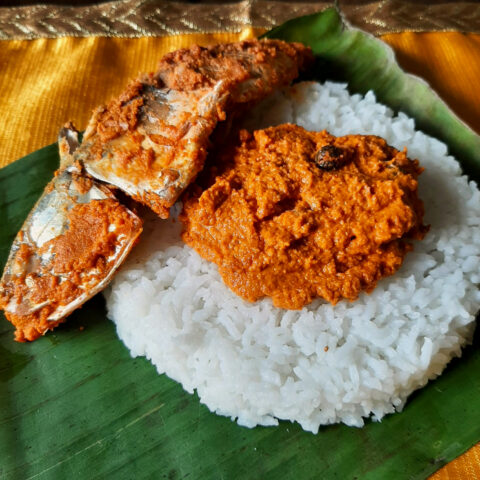
As much as GSBs love eating seafood, vegetarian delicacies have also been characteristically embraced by us. Saraswat households specially reserve Mondays and Thursdays for eating vegetarian food and even today this tradition is religiously followed. The vegetarian dishes in the Saraswat swayampaak (Kitchen) are uncomplicated and quick. One such gem is Karmana. In her childhood, my aai (mother) used to eat a meal of karmana-bhaat-kaachrya (karmana-rice-shallow fried vegetable fritters), a delicacy from the coastal Saraswat cuisine, introduced to her by my Grand aunt.
Karmana, upon first glance looks like coconut chutney but is actually a cold chutney curry that is eaten with hot rice. It is a perennial, unique tasting, easy to digest, healthy dish which does not involve cooking by application of heat.
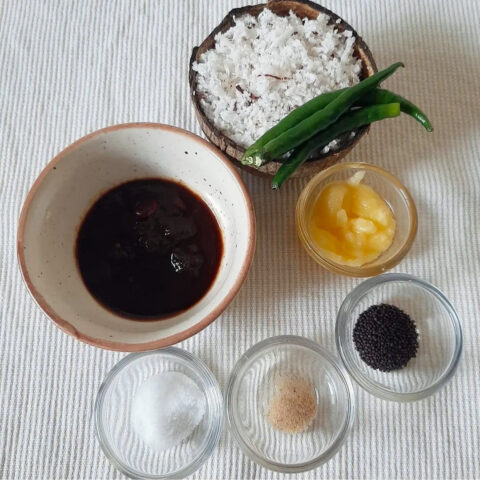
This four ingredient dish is made using freshly grated coconut, green chillies, tamarind and salt, which are blended in a mixer. An optional tempering of ghee, asafoetida and mustard seeds can be added to it. Just before you sit down to eat, a little amount of water is added to the blend to liquify it into a thick curry which is ladled onto hot rice.
In Saraswat families, Karmana is tantamount to eating fish curry during days reserved for vegetarian meals.
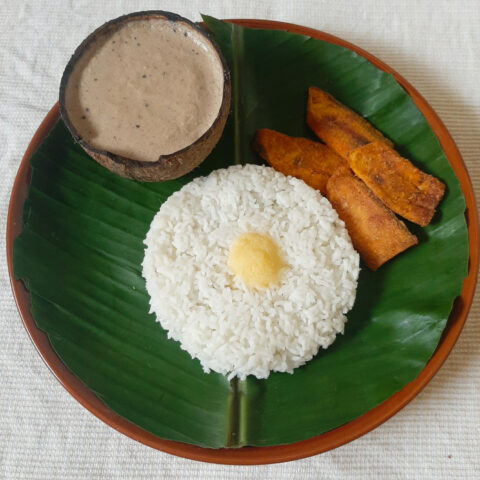
Another vegetarian dish which I remember eating a lot at my aai’s maternal home was Vaatanyaache Gole, a coastal Saraswat twist to aloo-mattar.
When the pods of Green Peas are opened, the string of tiny peas resemble ‘goles’ and hence the dish came to be known as vaatanyaache gole. Like any Saraswat recipe, freshly grated coconut is generously used and the moisture in it helps the peas cook and become tender. This uncomplicated spicy stir fried dish of green peas and chopped potatoes with skin is made with a minimal tempering of mustard seeds, asafoetida, turmeric powder and red chilli powder.
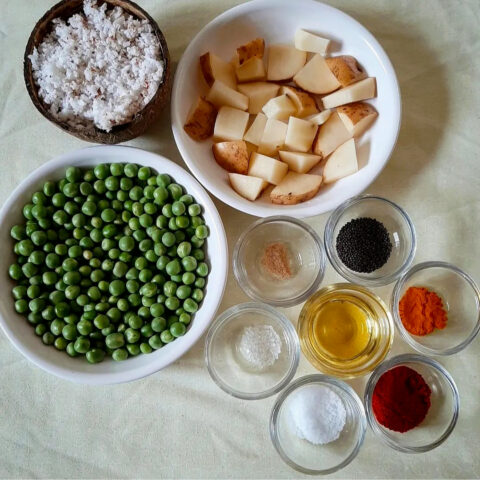
Vaatanyaache Gole was amongst my ajoba’s (Maternal Grandfather) favourite dishes which often made it to his office tiffin box. He would specially request my Grand aunt to prepare enough so that he could eat it again for dinner. Vaatanyache Gole has been a classic in our family since the past four decades now.
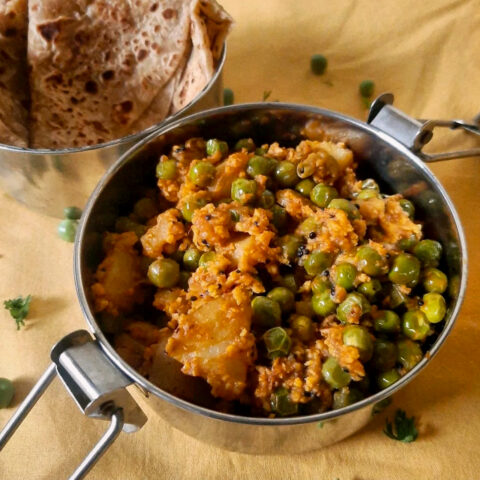
These unfamiliar dishes from the sub-groups of Gowd Saraswat Brahmin cuisine are utterly special. The deeper you go into exploring this cuisine, the more it will draw you towards it. In any Saraswat recipe, retaining the essence of the ingredients and cooking with restraint is key. We’re well known for our love for food which often means that we’re stubborn about being meticulous and following proper cooking etiquette; a trait we’re unabashedly proud of.
Shivani Kulkarni is a Mumbaikar with a background in Interior Designing and Product Styling. She is a curious and passionate cook who started @authenticswaad with an aim to document and showcase lesser known delicacies from Karwari and Konkan Saraswat cuisine which she has grown up eating.
Translations and detailed descriptions are provided to give a better understanding of the story to people from different cultural backgrounds across the globe.

